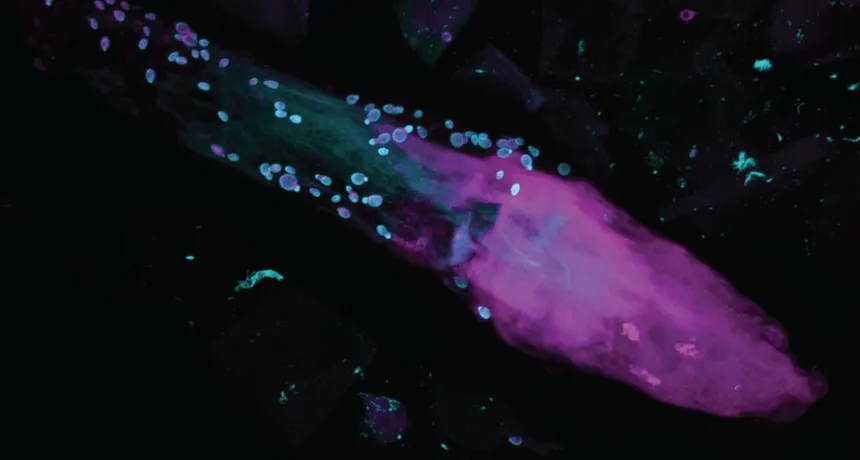
FUNGUS AMONG US One genus of fungi (green and blue specks) colonizes most of human skin, including this hair follicle from a person’s back. But more than 80 different groups reside on the feet.
Alex Valm, NHGRI

FUNGUS AMONG US One genus of fungi (green and blue specks) colonizes most of human skin, including this hair follicle from a person’s back. But more than 80 different groups reside on the feet.
Alex Valm, NHGRI